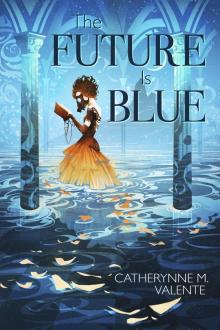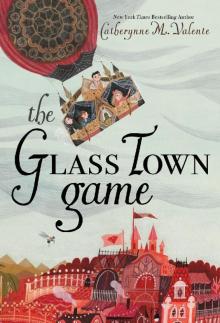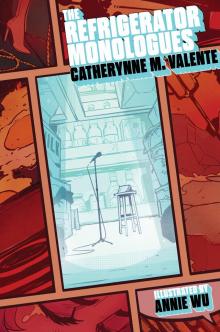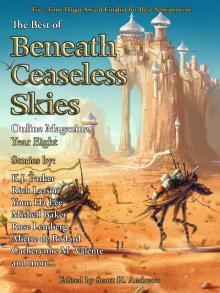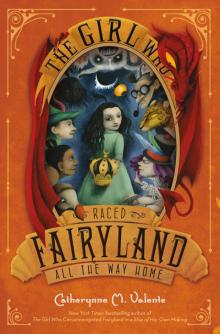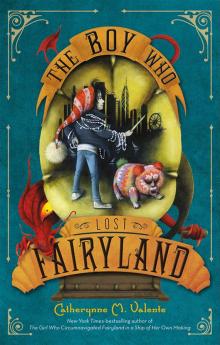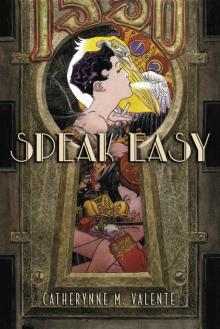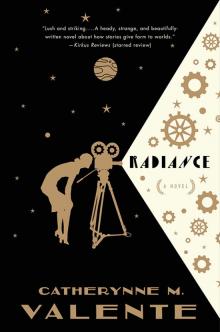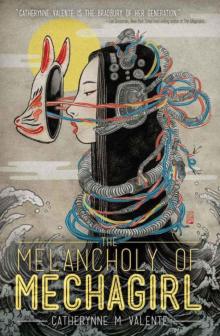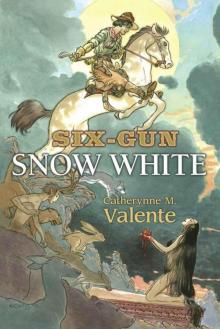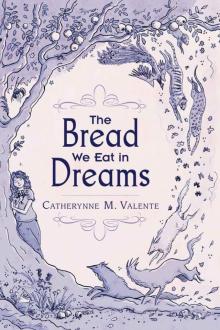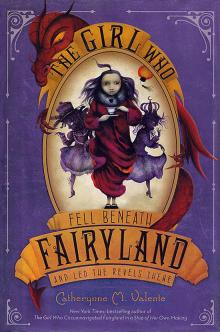


I Will Find You
Joanna Connors
In 1981, fifteen years after the Hough riots, Cuyahoga common pleas judge Burt Griffin wrote in his book Cities Within a City, “Hough ranks near the top in all of Cleveland’s disagreeable statistics—welfare recipients, crime, abandoned buildings, rate of illegitimate births and school dropouts.”
By 2007, when I went to find Ida Taylor, I could see scattered signs of recovery. A few brand-new McMansions and rows of town houses occupied long-vacant lots, but they shared blocks with abandoned houses boarded up with plywood and lots filled with weeds and trash.
I was afraid to go into the unfamiliar area alone, so I called my friend Sue, a psychiatric nurse whose work took her into Hough and Cleveland’s other poor and distressed areas every day. She made house calls to recently released patients from the city’s public mental health hospital, cajoling them to take their medications. She routinely went beyond her official job description, though, giving her clients coats and clothes, or finding their long-lost relatives.
I once went with her on a Saturday afternoon as she tried to track down a set of dentures one of her clients lost when the police found the woman outside on a cold evening, naked and shouting, and carted her off to the hospital. The search ended when Sue took her client—who was not only toothless but blind—back to her abandoned house in East Cleveland and kicked in the door. I knew Sue would be game to go along on this venture of mine.
We drove into Hough on a bright Saturday morning, with me gripping the steering wheel of my minivan while Sue talked and laughed, reapplied her lip gloss a few times, and, in general, appeared to be on her way to a fabulous party. We pulled up to an enormous house, one of the many mansions built a hundred years back, when Hough was a swank neighborhood and still home to the city’s haughtiest private boys’ school. The school had long since relocated to Shaker Heights, and no one would call Taylor’s home a mansion now. It needed a paint job, moss grew on the roof, the front porch slumped precipitously to one side. A planter in the bare front yard held plastic flowers. Sue told me to park across the street so we could watch the house for a while before we approached.
After ten or fifteen minutes, a stocky man walked up the driveway and went inside; a minute later, we saw him peering out at us from a front window. Sue decided we had to either leave or knock on the door—no more waiting. I chose the door.
I knocked and the man answered, opening the door just a crack. “What do you want?” he said. “I saw you over there in your car.”
Reporters do this all the time, knocking on the doors of strangers they can’t reach any other way, but I had never done a story that required it. I was lucky: Reporters hate doing it. It’s scary and rude, and we know the intrusions are a major reason Americans have such a low opinion of the media.
The man standing in front of me was not making it easy. My nervous system revved into overdrive, ready for me to run.
“I’m looking for Ida Taylor,” I said. “Does she still live here?”
He looked at me with suspicion and nodded.
“Is she home?” I asked.
“What do you want with her?”
“I’m a reporter for The Plain Dealer.”
This was true and not true. At that point, in 2006, I was working on the story by myself, on my own time, not for The Plain Dealer.
I had told one trusted editor about it, an editor who had helped me move from reviewing movies to writing long-form journalism, but I had not asked for an official assignment because I wasn’t sure this story, whatever it became, would fit the newspaper model.
I wanted to write about my rape in detail—detail no newspaper would print—to show that rape is not what most people imagine it is from watching movies. It is not dramatic, or exciting, and I was not “brave” during it, as so many people assured me I was. I was not brave afterward when I testified. I did what I had to do. I went through the motions required by both the rapist and the legal system. I was, in fact, a coward, living in fear of the death I had glimpsed.
So when the man at Ida Taylor’s front door asked me what I wanted with her, I had a vague answer prepared, the answer I would give everyone I encountered as I went along.
“I’m doing a story on men who died in prison in Ohio,” I said, “and I think she knew one of them.”
True, but not the whole truth. I thought it would shut people down entirely if I said, “I was raped, I’m doing a story about the man who did it, and I know you knew him.” So I came up with the “men who died in prison” explanation.
“Is she home?” I asked again.
He closed the door on me. It occurred to me that perhaps I shouldn’t have mentioned prison.
I turned and fled, with Sue right behind. We were almost to the minivan when an older woman opened the front door. “Somebody want to speak to me?” she called.
Ida Taylor didn’t ask questions after we introduced ourselves and I told her I was a reporter. She invited us in and led us to the living room, apologizing for how slow she was. Bad knees, she said. Arthritis.
She motioned for us to sit on the couch and eased her bulk into a chair across the room, beneath a framed portrait of Martin Luther King Jr. Next to him, someone had hung a pink Mother’s Day card that was as big as a movie poster.
“What can I do for you?” she asked.
I told her I was looking for information about her nephew, David Francis, who died in prison. She looked puzzled.
“David Francis?” she asked. “Who’s that?”
I explained about finding her name on the parole records.
“Oh, David Francis,” she said. “Millie’s son. He’s not my nephew.”
I knew from looking her up on Nexis that Taylor was seventy-one, but she seemed at least ten years older. She’d raised her ten children in this house, she told us, five Harrisons from her first marriage and five Taylors from her second. Grandchildren and friends had lived with her, too, over the years.
But David Francis? No, he never lived there. His mother Millie did.
Taylor said she met Millie back in the ‘70s, at a neighborhood after-hours joint that a woman named Velma Chaney ran out of her basement. Millie was new to Cleveland, and told Ida she was on the run from her husband back in Boston, afraid he would find her and kill her. She brought her two youngest children to Cleveland with her, and David showed up not long after that, on his own. Charlene, Millie’s oldest, was married to a man from Cleveland and already here.
Taylor said she let Millie move into an upstairs bedroom when she was down on her luck.
“This house has had some of everybody living here,” she said. “My kids come and go; grandkids. Long as you abide by my rules, I’ll have you.”
When she moved to Ida’s house, Millie gave her two youngest children to Velma Chaney to raise. Taylor remembered that. It was sad. But she said she didn’t really remember David. He wasn’t around much.
She called into the dining room: “Do either of you remember David Francis?”
The man who answered the door appeared with another man, both of them eating burgers half-wrapped in bright yellow paper.
“David Francis?” the second one said. “No.”
Taylor thought for a minute. “I remember now,” she said. “They called me from the prison to say he died. It was years ago.”
“He died in August of 2000,” I said.
“I don’t know why they called me,” Taylor said. “But they said my name was in his file, and they wanted to know what I wanted to do with his body. I said, ‘I couldn’t tell you. All I know is, his mother is dead. His brothers and sisters are in Boston, but I don’t know any of their numbers. You’ll have to do with him what you do. I don’t have the money to bury him.’”
She shook her head. “I hated it, but there was nothing else I could do.”
Ida looked over at the men. “These are my sons,” she said. “Russell and Gregory. Russell is the oldest of all my kids.”
Russell, who wore a gold cross the size of an Olympic medal, corr
ected his mother. He was the Reverend Russell Harrison, he told us before settling down on the couch so close to Sue he was almost touching her. He gave her a sly wink and a “let me buy you a drink” smile.
Gregory, who had answered the door, was still suspicious of us. He sat down near his mother and stared at us, saying nothing, while Russell nudged closer to Sue.
“What’s your name?” Russell asked her. “And tell me why I never met you before.”
Sue looked at him and laughed. “Oh, please,” she said. He laughed, too.
“Don’t mind me,” he said. “I just like the ladies.”
Later, I would recognize Russell’s name coming up, here and there, in David Francis’s police records. Back in the ‘70s, they’d been arrested together a few times for breaking and entering.
Taylor, her memories coming back to her, said that Millie hooked up with Earlie B. Giles at the after-hours joint.
“Earlie B.,” Russell said. “He the guy with one eye missing?”
Taylor nodded.
She said Earlie B. came with Millie when she moved into the house. “They stayed in their room most of the time and drank,” Taylor said. “She was a stone alcoholic. And she had that crippling arthritis real bad. It was hard for her to go up and down the stairs.”
In the summer of 1984, Millie’s arthritis and the drinking got so bad, her oldest daughter took her back to Boston. A couple of months after that, Taylor heard she died in a house fire up there.
“She was in a wheelchair on the second floor,” Taylor said. “She burned up. They say her husband set the fire, but no one ever proved it.”
Taylor said she thought Millie’s youngest daughter, Laura, still lived in Cleveland.
“I heard she got into drugs and was on the stroll,” Russell said. “But I saw her about a year ago at the food bank down on Superior. She said she was a Christian now. She was going to a church up around there somewhere.”
He couldn’t remember the name of the church or where it might be. None of them knew how to get in touch with her, or with any of the kids who went back to Boston.
“I haven’t thought about Millie or her kids in years,” Ida said.
Later, I called my sister Nancy to tell her about Ida and the parole records and the two sons. “They remembered his mother, but they didn’t remember him,” I said.
“Wow,” Nancy said. “What if it turns out that you’re the only person left who does?”
CHAPTER SIXTEEN
“David was the biggest mystery”
In myths and legends, the fire-breathing dragon never has a family. The dragon always lives alone in a cave or on a mountaintop, and the person who sets out to vanquish him must first go through a dark forest.
My dragon had a family. My dark forest was a wilderness of databases and public records.
David Francis was one of eight children born in Boston in the ‘50s and ‘60s to Mildred (or Millie) Rodriques and Clifford Francis.
I discovered this on one of the dozens of prison reports stuffed into the prosecutor’s files—reports that had so little cohesion over David Francis’s sixteen years of incarceration in five different Ohio prisons that each one offered different, almost random information. On this one, David Francis listed his siblings’ names: Charlene, Clifford Jr., Philip, Joseph, Linda, Neamiah, and Laura.
I already knew their mother died a month after David Francis raped me in 1984. A Social Security death record check showed that their father, Clifford, died in Roxbury, Massachusetts, in 1995. The same record said Clifford Jr. died in 1994, at the age of forty.
I searched for the other siblings on Nexis, where I found page after page of names matching “Linda Francis” or “Joseph Francis.” The women could have married and changed their names as well, and Neamiah—the one name I had a hope of finding—was off the grid as far as I could tell. Perhaps he never registered for Social Security and never voted or drove or put his name to any of the other information sources culled by Nexis.
I thought about trying to find Laura, the sister the Reverend Russell Harrison had seen, in one of the scores of churches that lined Superior Avenue, but that would be like trying to find someone by checking every Starbucks in Manhattan on a Sunday morning.
I finally found Neamiah in the Cuyahoga County criminal records, under the misspelled “Nemiah Francis.” His five arrests, between 1987 and 2005, all involved drug possession and abuse, making him a casualty of the War on Drugs, which statistics show was waged mostly on young men in poor black communities across America.
Neamiah’s last known address, in 2005, was an overcrowded men’s homeless shelter in Cleveland, the one place Sue told me she hated to go to see her clients. When I called the shelter, they said he was no longer there. He could have gone anywhere, they said.
My last stab was Charlene, the oldest sister. David Francis listed her as his backup support for parole, if Ida Taylor couldn’t take him. He had listed her married name, Blakney.
I decided to go to Boston for a couple of days to see what I could find of the Francis family at the Massachusetts Registry of Vital Records and Statistics.
I ended up spending the day there, in an office park on the outskirts of the city, going through birth, death, and marriage certificates. Dates of birth are especially helpful in records searches, and the marriage and death certificates might give me leads, too.
I found that Mildred E. Morrell (not Rodriques, or Matia) and Clifford G. Francis were married on August 8, 1950, by a justice of the peace in Boston. Clifford was twenty-four and a truck driver. Mildred was thirty years old and a “stitcher,” which meant she ran a sewing machine in a factory.
Mildred was also pregnant. A birth certificate showed that Charlene Francis was born four months later, on December 19, 1950, in Boston. It noted the parents’ races: Clifford was “red,” Mildred was “col.” I found birth certificates for all of the other children except the two youngest, Laura and Neamiah. I was beginning to think I would never find them.
A death certificate for Mildred Francis, “AKA Matia Rodriques,” said she had died of “smoke inhalation and severe thermal injuries” on August 16, 1984. The cause of the fire was “pending investigation.” Her son, Clifford Francis Jr., died under suspicious circumstances, too, on January 27, 1994, of “multiple blunt trauma to face and forehead, struck by another person in a residence.” The medical examiner ruled it a homicide. His death, like his mother’s, was unsolved.
Another marriage certificate showed that Clifford Francis Sr. remarried after Millie died. He lived another eleven years, dying on August 24, 1995, of pancreatic cancer. By then, his racial category on his death certificate had changed from “red” to “American Indian.”
In 2007, the Plain Dealer’s editor retired. The publisher surprised us all when he hired the first female editor in chief in the paper’s 150-year history. In June, Susan Goldberg arrived and changed everything for me. Like all editors, she wanted to put her stamp on the paper and win prizes with important stories. When my trusted editor told her about a story I was pursuing on my own—the David Francis story—she called me into her office to tell me she wanted it for the paper.
I still wasn’t sure I would find anyone in the Francis family, or that I could produce the kind of story I knew she envisioned: a prize-winner. All editors, no matter how much they deny it, want to win the big journalism awards. Neither of us mentioned it, but it was obvious, and it made me uneasy. I never saw myself as a winner. Most of the time, I still felt like an imposter in the newsroom.
But I needed more than weekends and evenings to work on it, and I needed an editor to help me find my way. We came to an agreement. My children and my husband would have full veto power over everything in the story. I would have six months—a rare luxury in the news business—and a photographer with me on all of my interview attempts.
At the first editorial planning meeting, I noted another newspaper rarity. Almost everyone around the table was a woman—the editor, th
e managing editor, the features editor who would be handling my story, the layout editor, the copy editor, and the photographer. I wish I had taken a picture to send to the guy who’d asked about the “pulchritude corner.”
I told them I had eleven different addresses for Charlene, all of them listed in Nexis as current, and I’d located one of the brothers, Philip, in the Massachusetts state prison at Bridgewater.
We decided I would go back to Boston to talk to Charlene and Philip, and that the photographer, Lisa, would go with me.
Setting up an interview with an inmate is a long process with many steps, and back then it was usually conducted by letter, not e-mail or phone. Massachusetts required me to get permission to see Philip first from the head of the prison system, then from the warden. After they signed off, I wrote to Philip directly to ask for an interview, and waited while the letter went through the prison’s mail inspections. Then I waited for him to respond, and for that letter to go through the process in reverse.
When Philip didn’t respond, I wrote again, this time including a letter of agreement that he could just sign. A few weeks later I got it back, signed “PHILIP,” in block lettering. Someone else had written in his last name. I set up an interview date with the warden, and in October Lisa and I flew to Boston.
We looked for Charlene first. Some of her addresses were in Boston, but most were in New Bedford, a town on the coast south of Boston that was once the hub of the whaling industry. Herman Melville had worked out of New Bedford as a whaler.

